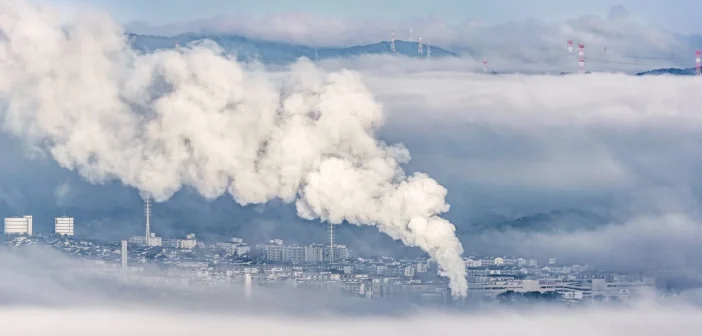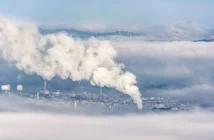credit:https://pixabay.com/
As the world races toward sustainable energy solutions, supercritical geothermal energy emerges as a revolutionary contender. Unlike traditional geothermal energy, this technology taps into superheated fluids deep within the Earth’s crust, offering unparalleled efficiency and sustainability. This article delves into the science, advantages, challenges, and potential of supercritical geothermal energy, exploring its role in reshaping the future of renewable power.
1. Understanding Supercritical Geothermal Energy
Supercritical geothermal energy unlocks an immense, untapped power source by utilizing fluids in a rare hybrid state—neither purely liquid nor gas—achieved under extreme depths and conditions exceeding 374°C (705°F) and 22.1 MPa. This unique phase allows for superior heat transfer and energy extraction, offering up to 10 times the power output of conventional geothermal systems while requiring less drilling and surface infrastructure. Unlike traditional methods that rely on steam or hot water with inherent energy losses, supercritical fluids carry thermal energy more efficiently, enabling deeper reservoirs to be harnessed for sustainable, high-density power generation. With the potential to revolutionize clean energy, this breakthrough technology could transform geothermal power into a dominant, baseload source, rivaling fossil fuels without their environmental toll.
2. Advantages Over Conventional Geothermal Energy
Supercritical geothermal energy revolutionizes renewable power by leveraging superheated fluids that can transport up to ten times more energy than conventional geothermal sources, significantly boosting electricity generation efficiency (DOE, 2023). Unlike fossil fuels, it operates with zero carbon emissions, minimizing environmental impact while also requiring less surface land than traditional energy projects. Unlike solar and wind, which are weather-dependent, supercritical geothermal provides uninterrupted, 24/7 baseload power, ensuring grid stability without the need for large-scale energy storage. While initial drilling and exploration costs can be substantial, the long-term economic benefits outweigh the investment, as lower maintenance, minimal fuel dependency, and extended system longevity lead to significant cost savings over time. This cutting-edge technology not only advances sustainable energy solutions but also enhances global energy security by unlocking vast, untapped geothermal potential deep within the Earth.
3. Current Technological Advances and Projects
Countries leading supercritical geothermal research—such as Iceland, Japan, and the United States—are pioneering projects that push the limits of energy extraction from Earth’s extreme depths. Iceland’s Deep Drilling Project (IDDP) reached over 4,500 meters, tapping into supercritical fluids capable of generating up to five times more energy than traditional wells, marking a breakthrough in geothermal efficiency (Albertsson et al., 2020). Japan’s Kakkonda Geothermal Field is pushing the boundaries of ultra-deep drilling, aiming to scale supercritical technology for commercial use. Meanwhile, the U.S. Department of Energy’s FORGE (Frontier Observatory for Research in Geothermal Energy) project is refining Enhanced Geothermal Systems (EGS), which could integrate supercritical reservoirs to unlock vast, untapped geothermal potential. These initiatives not only aim to revolutionize renewable energy production but also address the technical challenges of drilling in high-temperature, high-pressure environments, paving the way for geothermal to become a dominant global energy source.
4. Challenges in Supercritical Geothermal Development
Supercritical geothermal energy holds vast potential as a renewable powerhouse, but its widespread adoption faces significant hurdles. Drilling into deep, high-pressure reservoirs requires cutting-edge technology, with advanced heat-resistant materials essential to combat extreme temperatures and mechanical stresses that quickly degrade conventional equipment. These high-tech materials are costly and difficult to develop, further driving up expenses. In addition, locating viable geothermal reservoirs is complex, as traditional methods like seismic imaging and exploratory drilling are both expensive and uncertain, often requiring multiple attempts before identifying viable sites. Once potential reservoirs are found, navigating regulatory frameworks and addressing environmental concerns—such as the risk of induced seismicity from deep drilling—add additional layers of complexity. Despite these challenges, the integration of innovations like ultra-durable materials, AI-powered techniques for more accurate reservoir mapping, and streamlined regulatory processes could propel the sector forward, ultimately making supercritical geothermal energy a reliable and sustainable source of power for the future, capable of transforming energy landscapes worldwide.
5. The Future Potential of Supercritical Geothermal Energy
Supercritical geothermal energy, tapping into the extreme heat and pressure deep within the Earth, has the potential to revolutionize global energy systems by delivering significantly higher efficiency than conventional geothermal sources. With fluid temperatures exceeding 374°C and pressures above 22 MPa, this resource can generate up to ten times more energy per well, making it a game-changer for sustainable power production. By 2050, scaling up this technology could supply around 10% of global energy needs (IEA, 2024), but its impact extends beyond electricity generation. When integrated with hydrogen production, supercritical geothermal can provide the high-temperature steam required for efficient electrolysis or thermochemical water splitting, creating a zero-emission energy cycle that minimizes dependence on fossil fuels. Unlike intermittent renewables, it offers a stable, 24/7 power source, making it ideal for industrial applications and grid stability. However, widespread adoption hinges on advancements in deep drilling technology, reservoir management, and policy support. Governments and private investors must accelerate R&D efforts to overcome technical barriers and unlock the full potential of this untapped resource, paving the way for a cleaner, more resilient energy future.
6. Conclusion: A Game-Changer for the Energy Industry
Supercritical geothermal energy harnesses the immense power of superheated fluids deep within the Earth, operating beyond their critical point where they exhibit properties of both liquid and gas, allowing for vastly superior energy extraction compared to conventional geothermal systems. This next-generation renewable source boasts extraordinary efficiency—potentially yielding up to ten times more energy per well—while remaining inherently sustainable as Earth’s internal heat is virtually inexhaustible. However, unlocking this hidden power requires overcoming formidable challenges, including drilling through extreme temperatures and pressures, developing corrosion-resistant materials, and refining subsurface imaging techniques to locate optimal reservoirs. Yet, rapid advancements in ultra-deep drilling, AI-driven seismic mapping, and thermally resilient alloys are pushing the boundaries of feasibility. As climate change accelerates the demand for reliable, carbon-free energy, supercritical geothermal could revolutionize the global energy landscape, offering a perpetual, high-density power source capable of supporting industrial grids, direct hydrogen production, and even desalination, making it one of the most promising frontiers in the clean energy transition.
References
- Albertsson, A., et al. (2020). Iceland Deep Drilling Project: Achievements and Future Prospects. Renewable Energy Journal.
- DOE (2023). Supercritical Geothermal Energy: Advancing Sustainable Power Generation. U.S. Department of Energy Report.
- IEA (2024). Global Renewable Energy Outlook: The Role of Supercritical Geothermal Energy. International Energy Agency Report.
- Smith, J., et al. (2021). Exploring Supercritical Fluids for High-Efficiency Geothermal Energy. Geothermal Science Review.



